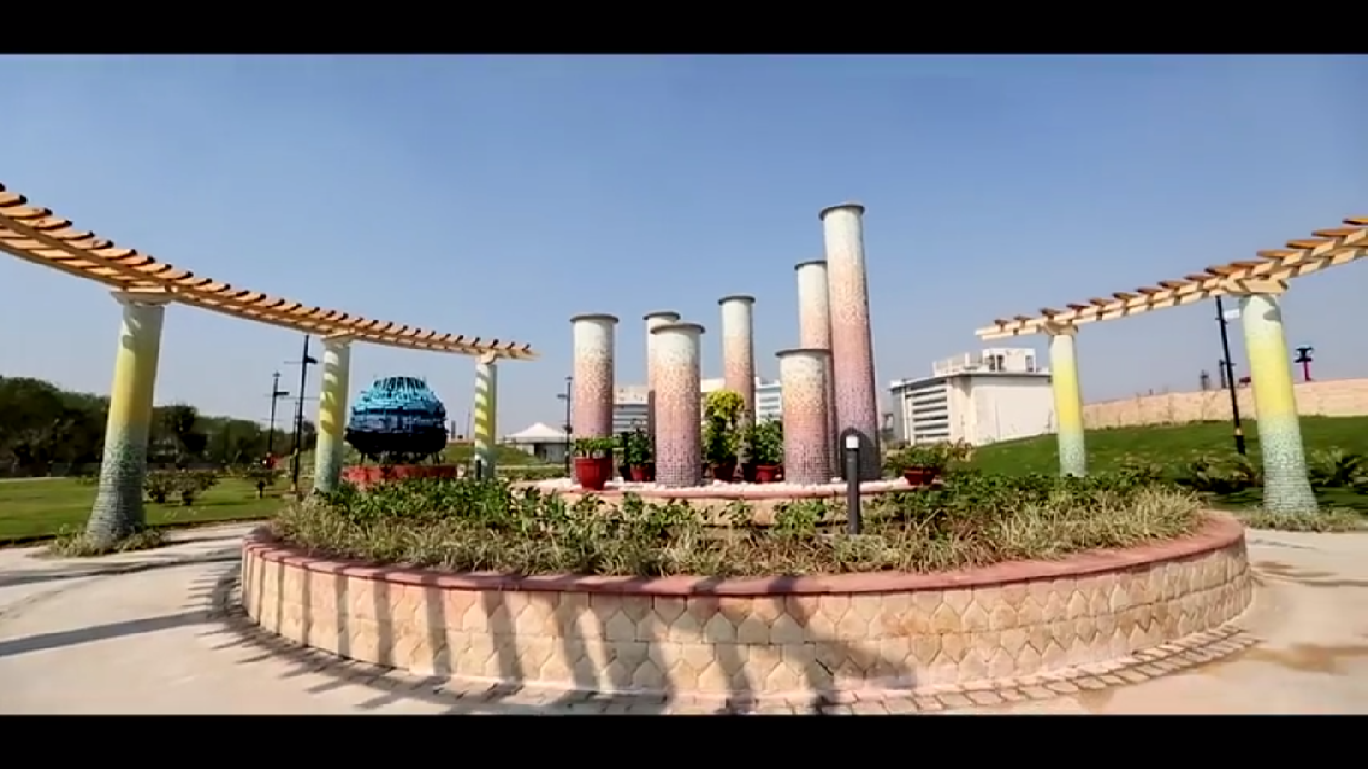This One-Of-A-Kind Park in Delhi Was Made Using 25 Tonnes of Scrap and 5,600 Cubic Metres of Muck
An interesting concept, the park has been created using the waste material retrieved from different sites where the Delhi Metro Rail Corporation (DMRC) has worked.

Inaugurated on February 20, near the Shastri Park Metro Railway Station, is the Prakriti Metro Park. An interesting concept, the park has been created using the waste material retrieved from different sites where the Delhi Metro Rail Corporation (DMRC) has worked.
Prakriti Metro Park, which took the DMRC nine months to create, is a one-of-a-kind park oriented towards creating greener public spaces in the capital.
This unique park has been created using 25 tonnes of scrap and 5,600 cubic metres of muck from various metro rail sites.

“The park is spread over an area of over 10 acres and has a host of recreational as well as artistic attractions. There is an auditorium, an amphitheatre, a meditation alcove, a playground for children and a gymnasium, which can be used by visitors to the park. A lake with a fountain, and a replica of a rain forest has also been created in the park,” says Mr Anuj Dayal, executive director of corporate communications, DMRC.
“The main highlights of the park are the 12 beautiful artistic installations created from waste materials generated from various Delhi Metro construction sites. Interestingly, these sculptures have been created using scrap material like MS sheets, TMT bars, hollow electric poles, rail tracks and train brake shoes. Artists from across India, in collaboration with some South Korean artists, have come together to create these sculptures, all of which carry pertinent messages. The pathways have been created using interlocking tiles and leftover granite tiles,” continues Mr Dayal.
The Trellis Court, right in the centre of the park, has eight pillars of progressively increasing height, which depicts the evolution of the Delhi Metro from a nascent organisation.
DMRC took up the challenge of encompassing Delhi with the metro network and is now in the process of completing many new lines.

Delhi Metro’s work towards the environment has been depicted both in the design as well as the eventual construction of the park.

An environmental gallery has been created, which has paintings about the importance of environmental protection. Top soil from various underground station sites is being utilized for the gardens, which house medicinal and pollution-absorbing plants. Trees and plants that attract birds, as well as those that repel mosquitoes, are planted all around the park.
All the plants in the park have been specifically chosen and are all native to the region, making sure that they will thrive even in case of a water shortage.

“Over and above this, the water required for all the horticultural uses in this park is provided by the sewerage water treatment plant in the vicinity. The little lake, which has been carved out in the park, is integrated with the rainwater harvesting pit. The power requirements of the park is provided by the solar panels mounted above the auditorium. The dried leaves and grass are used to make natural manure, on the premises itself, which will be used for all the plants in the park” adds Mr Dayal.
The Indian Green Building Council (IGBC) has given the park a ‘Platinum’ rating, recognising the numerous environmentally friendly features.
With the creation of this park, the DMRC has proved itself to be an organisation that not only excels in transportation, but also one that is environmentally conscious.

The park is within walking distance from the Shastri Park Metro station on the Red Line. It also has a dedicated parking lot that can accommodate 72 cars.

Like this story? Or have something to share? Write to us: [email protected], or connect with us on Facebook and Twitter (@thebetterindia).
Aparna Menon is a freelance writer, writing for various newspapers for the past 10 years. Her main fields of interest are wildlife, heritage and history. A keen traveller, she loves to read and write and does a lot of art work too.
This story made me
-
97
-
121
-
89
-
167
Tell Us More
We bring stories straight from the heart of India, to inspire millions and create a wave of impact. Our positive movement is growing bigger everyday, and we would love for you to join it.
Please contribute whatever you can, every little penny helps our team in bringing you more stories that support dreams and spread hope.


















